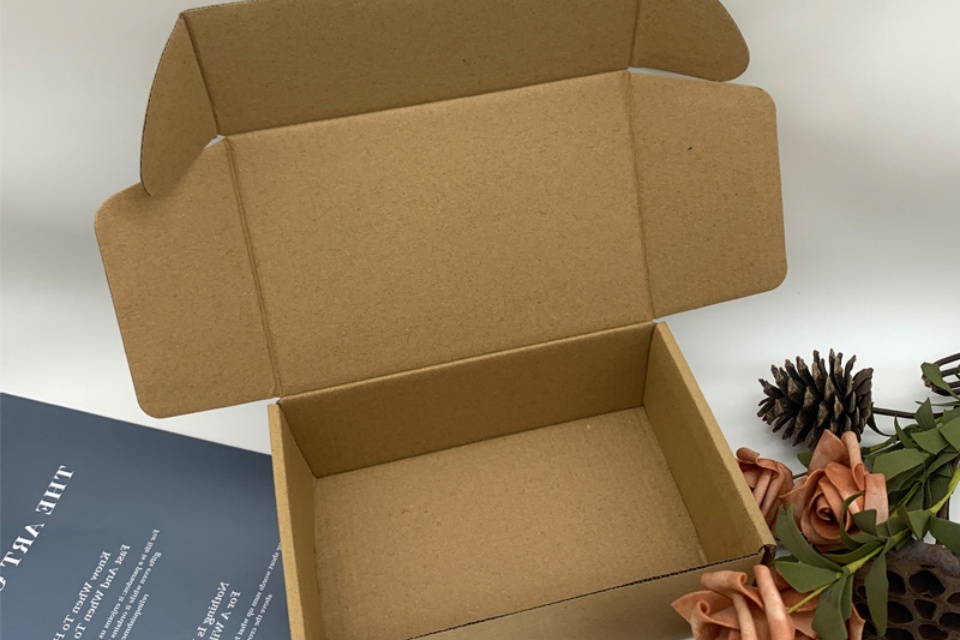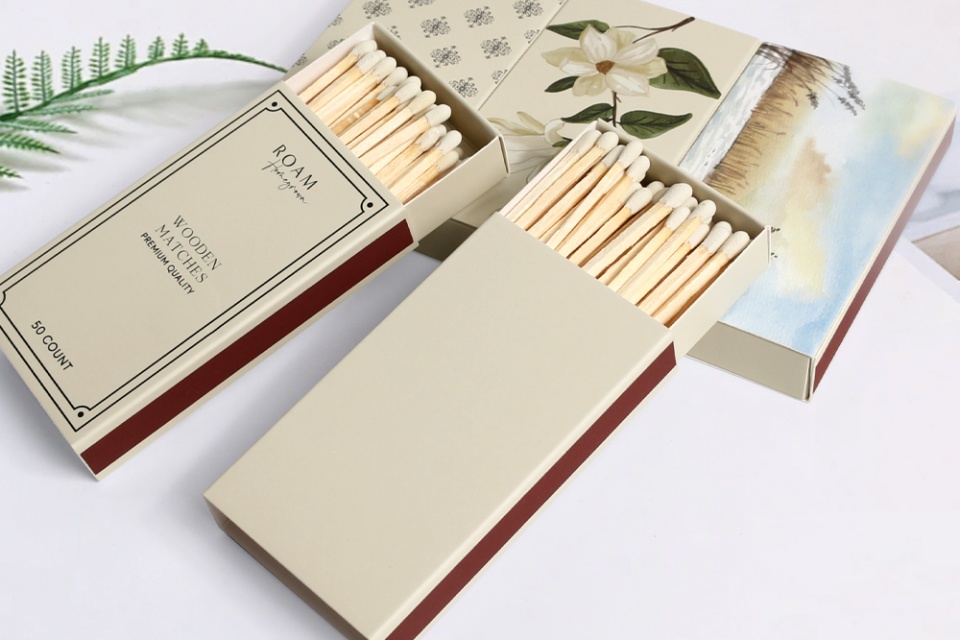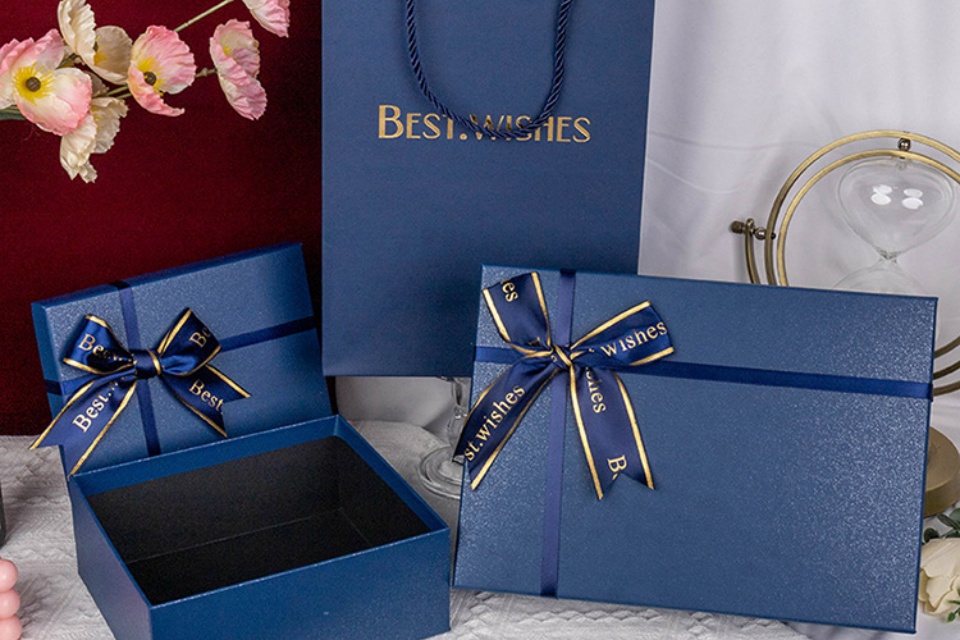Industry News
Minimalist Packaging Design - Why Less Is More
Minimalist Packaging Design - Why Less Is More
Summary
Minimalist packaging design is an aesthetic and functional approach to product packaging that emphasizes simplicity and efficiency, aligning with the design philosophy of "less is more." This concept has gained prominence in recent years as brands seek to differentiate themselves in a crowded marketplace, while also responding to growing consumer demand for sustainability and transparency. By focusing on essential elements, minimalist packaging utilizes clean lines, ample white space, and limited color palettes to enhance product visibility and foster emotional connections with consumers.
The origins of minimalist design can be traced back to influential movements such as the Bauhaus and Scandinavian design, both of which prioritize clarity, functionality, and practicality. Over the decades, minimalist packaging has evolved, particularly in the late 20th century when consumer preferences shifted towards individualism and sustainability. Modern brands, including notable examples like Apple and Aesop, have effectively leveraged minimalist packaging to communicate brand identity, enhance user experience, and express a commitment to environmental responsibility.
One of the most significant advantages of minimalist packaging is its potential to reduce environmental impact by minimizing material usage and waste, thereby appealing to eco-conscious consumers. Additionally, it often leads to cost savings for businesses through simplified production and logistics processes. However, the transition to minimalist designs is not without challenges, including regulatory compliance and the need to balance aesthetics with functionality.
As consumer preferences continue to evolve, the future of minimalist packaging design is likely to integrate advancements in sustainable materials and technology, further emphasizing its relevance in contemporary markets. Brands that embrace these innovations will not only enhance their competitive edge but also align with the values of a growing demographic that prioritizes sustainability and conscious consumption.
History
Early Influences
Minimalist design has its origins in various artistic and design movements that emphasize simplicity, functionality, and clarity. The Bauhaus movement, which emerged in the early 20th century, played a significant role in shaping these principles. It advocated for a design approach that merged art with industrial production, promoting the idea that form should follow function. Similarly, Scandinavian design has contributed to the minimalist ethos, emphasizing clean lines, natural materials, and a focus on practicality.
Evolution through Decades
The evolution of minimalist packaging design can be traced through several key historical periods. The 1920s and 1930s saw the rise of the Art Deco movement, characterized by bold colors and geometric patterns, which reflected the optimism of the era. However, this vibrant design language gave way to the post-World War II period, especially during the 1950s, which embraced brighter colors and a sense of hope that permeated design trends, including packaging. In the late 20th century, a shift toward individualism and eclectic styles emerged, particularly during the 1960s and 1970s, when packaging began to incorporate both earthy tones and psychedelic colors as a reflection of the cultural revolutions of the time.
Contemporary Minimalism
In recent years, minimalist packaging design has gained renewed attention as brands aim to stand out in a cluttered marketplace. Modern brands, influenced by changing consumer preferences towards sustainability and transparency, have embraced minimalism as a means to communicate brand identity effectively. This contemporary approach focuses on essential elements, utilizing limited color palettes and straightforward typography to enhance user experience and foster emotional connections with consumers. As the trend continues to evolve, minimalist packaging is increasingly recognized not only for its aesthetic appeal but also for its ability to convey a brand's commitment to sustainability and conscious consumption.
Principles of Minimalist Packaging Design
Minimalist packaging design centers around the concept of simplicity, striving to eliminate excess and focusing on the essentials to create a functional and aesthetically pleasing presentation. This approach aligns with the philosophy of "less is more," promoting efficient use of materials and a clean visual aesthetic that enhances consumer perception of the product.
Simplicity and Functionality
At the core of minimalist packaging is the commitment to simplicity. By stripping away unnecessary elements such as excessive graphics, complicated shapes, and verbose text, minimalist design prioritizes essential information and protection of the product. This focus on functionality ensures that packaging serves a practical purpose, optimizing storage space, reducing shipping costs, and minimizing the risk of damage during transit.
Aesthetic Appeal
Minimalist packaging utilizes clean lines, ample white space, and a limited color palette to convey elegance and sophistication. Neutral tones like white, black, and beige are frequently employed to establish a timeless appeal, while accent colors can be used sparingly to draw attention to key elements. The uncluttered layout not only enhances the visual appeal but also makes it easier for consumers to read and comprehend the information presented, thus aiding in decision-making.
Brand Identity and Recognition
Effective minimalist packaging design is closely aligned with a brand's identity. Consistency in colors, fonts, and logos across product lines reinforces brand recognition in a crowded market. Brands like Apple exemplify this approach, using minimalist packaging to reflect their ethos of simplicity and quality, thereby strengthening consumer trust and loyalty.
Communicating Sustainability
As consumer demand for sustainable practices rises, minimalist packaging often incorporates eco-friendly materials and printing techniques. This design philosophy not only supports environmental initiatives but also communicates a brand's commitment to social responsibility, appealing to the values of eco-conscious consumers. Clear messaging about sustainability initiatives can enhance consumer trust, driving loyalty and fostering a deeper connection between the brand and its audience.
The Power of Negative Space
Utilizing negative space effectively is a key principle in minimalist packaging. This technique involves intentionally leaving areas of the design empty to enhance visual clarity and focus attention on essential elements, such as the product name and logo. By creating a sense of breathing room around these elements, brands can communicate confidence and quality, allowing the product to stand out amid a visually noisy market.
Benefits of Minimalist Packaging
Minimalist packaging design offers a multitude of advantages that extend beyond aesthetics, impacting environmental sustainability, cost efficiency, consumer perception, and brand recognition.
Environmental Contribution
One of the primary benefits of minimalist packaging is its significant contribution to reducing environmental impact. By minimizing material wastage and utilizing renewable resources, companies can drastically lower their carbon footprint. As global concerns over packaging waste continue to rise, adopting minimalist practices helps mitigate adverse effects on the environment. This approach aligns with the growing consumer demand for eco-friendly products and practices, emphasizing the need for brands to demonstrate social and environmental responsibility.
Cost Efficiency
Minimalist packaging inherently reduces production and shipping costs due to its simpler design and reduced material usage. Less material translates to lower costs, making it economically advantageous for businesses. Additionally, streamlined designs lead to more efficient transportation, as lighter and smaller packages facilitate better logistics and reduce the overall carbon footprint. The savings in production and shipping costs can be redirected towards improving product quality or lowering prices for consumers, creating a win-win scenario.
Enhanced Brand Image
Minimalist packaging also plays a crucial role in enhancing brand recognition and consumer perception. Clean, uncluttered designs resonate with consumers looking for authenticity and simplicity in their purchases. Brands that utilize minimalist packaging often reflect their core values and identities, strengthening their market presence. For example, brands like Apple utilize minimalist design to embody their ethos of simplicity and elegance, thereby reinforcing their brand image in consumers' minds.
Improved User Experience
From a consumer standpoint, minimalist packaging can enhance the overall user experience. Easy-to-open designs reduce frustration, while the reduced packaging waste aligns with the desires of consumers aiming for a less cluttered lifestyle. Moreover, minimalist packaging promotes cognitive ease by simplifying the decision-making process in busy retail environments, allowing consumers to focus on the product itself rather than being distracted by excessive packaging elements.
Operational Efficiencies
Minimalist packaging leads to operational efficiencies in manufacturing and warehousing. Simplified packaging designs can streamline production processes, saving time and resources, while also optimizing shelf space in retail settings. Companies can manage inventory more effectively and improve logistical planning, contributing to a more efficient overall operation.
Case Studies
Aesop
Aesop, a renowned beauty brand, exemplifies the effective use of minimalist packaging to convey authenticity, quality, and sustainability. The brand's packaging philosophy emphasizes the integrity of its ingredients and environmental responsibility through its minimalist design approach. Aesop primarily utilizes recyclable materials, such as glass and aluminum, while minimizing the use of unnecessary plastics. Their distinctive amber glass bottles, complemented by simple labels, evoke a vintage apothecary feel, appealing to consumers who value authenticity and heritage in skincare products. This consistent design language across all products not only enhances brand recognition but also fosters trust among consumers.
Le Labo
Following in Aesop's footsteps, Le Labo has successfully integrated a personalized touch into its minimalist packaging. By allowing customers to customize labels with their names, Le Labo creates a sense of exclusivity and personal connection, setting it apart in the competitive beauty market. This blend of minimalism and personalization resonates well with consumers seeking unique and meaningful experiences, demonstrating how brands can differentiate themselves through innovative packaging solutions.
Coca-Cola's Sustainability Initiatives
Coca-Cola has also embraced minimalist packaging as part of its sustainability initiatives. The brand has focused on reducing excess materials and incorporating eco-friendly materials in its packaging designs. By transitioning to lighter bottles and optimizing production processes, Coca-Cola not only lessens its environmental impact but also reduces costs associated with materials and transportation. This approach reflects the broader trend of companies recognizing the importance of sustainable practices in appealing to environmentally conscious consumers.
Apple
Apple's packaging serves as a prime example of minimalist design that enhances product appeal. The company emphasizes clean lines, simple graphics, and the strategic use of space, which collectively underscore the brand's commitment to elegance and sophistication. Apple's packaging not only protects its products effectively but also provides an unboxing experience that adds value for consumers. This focus on simplicity and functionality aligns with consumer preferences for transparency and authenticity, enhancing brand loyalty.
Uniqlo
Japanese clothing retailer Uniqlo showcases how minimalist packaging can enhance brand perception. The brand uses simple, monochromatic packaging that reflects its clean and modern aesthetic. By minimizing visual clutter, Uniqlo effectively communicates its brand values of simplicity and functionality, appealing to a consumer base that appreciates understated elegance. This approach not only differentiates Uniqlo in the fast-fashion market but also aligns with the growing demand for sustainable and ethical practices in retail.
These case studies highlight how companies across various industries are leveraging minimalist packaging design to enhance brand identity, foster customer loyalty, and promote sustainability, ultimately demonstrating that less can indeed be more.
Consumer Psychology
Consumer psychology plays a vital role in shaping preferences and buying behaviors, particularly in the realm of packaging design. Understanding the psychological triggers that influence consumer decisions helps companies create packaging that not only captures attention but also resonates with the emotional and practical needs of consumers. Packaging is perceived not merely as a protective layer for products but as a critical communication tool that conveys brand values and enhances the overall user experience.
The Role of Packaging in Emotional Connection
The psychology of packaging is deeply intertwined with emotional perception. A well-designed package can transform a simple product into a compelling experience that resonates with consumers. For instance, packaging elements such as color, typography, shape, and quality are instrumental in establishing an emotional connection. Color, in particular, is significant; studies indicate that 90% of initial impressions about a product stem from its color choice. By effectively employing color psychology, brands can evoke specific emotions that align with their messaging and appeal to target demographics.
Building Anticipation and User Experience
The outer packaging serves as the first point of contact with consumers, and its design can generate excitement and intrigue. For example, thoughtful details like unique textures or suspenseful unboxing elements can enhance the anticipation of discovering the product inside. Furthermore, adding personal touches, such as handwritten notes or branded items, enriches the unboxing experience, fostering a sense of connection and thoughtfulness. This focus on user experience contributes significantly to consumer satisfaction and brand loyalty.
Sustainability and Consumer Preference
In today's environmentally conscious market, sustainable packaging practices also influence consumer behavior. Eco-friendly materials not only enhance a brand's image but also meet the increasing demand for sustainable products. Research shows that a significant portion of consumers (71%) actively chooses products based on their sustainability features, highlighting the importance of aligning packaging strategies with consumer values regarding environmental responsibility. The integration of sustainability into packaging design not only satisfies ethical consumerism but also cultivates brand loyalty, as consumers feel they are contributing to positive environmental change through their purchases.
The Power of Visual Design
Maximizing visual impact through effective packaging design is essential in a competitive marketplace. Strong visual hierarchy and storytelling within packaging can significantly influence consumer perceptions and decisions. Brands that consistently present their packaging in a visually appealing and cohesive manner are more likely to enhance brand recognition and foster emotional connections with consumers. Transparency in design, such as minimalist labeling, communicates reliability and builds trust, further solidifying the consumer-brand relationship.
Challenges
While minimalist packaging design offers numerous benefits, it also presents several challenges that companies must navigate to achieve effective implementation.
Regulatory Compliance
One of the primary challenges in minimalist packaging design is ensuring compliance with various packaging laws and regulations, which can vary widely by region and product type. Companies need to ensure that their minimalist designs still meet all legal standards regarding safety, labeling, and materials. Navigating these regulations can be complex, particularly for businesses operating in multiple markets, potentially leading to increased costs and delays.
Supply Chain Adjustments
Implementing minimalist packaging often requires substantial adjustments to the supply chain. Companies may need to re-evaluate their packaging design processes, invest in new technologies, or collaborate with suppliers to develop innovative, minimal packaging solutions. Finding the right materials that are both minimal and protective can pose significant hurdles, necessitating extensive research and development into sustainable alternatives. This can strain resources and may lead to increased complexity in logistics and production.
Balancing Functionality and Aesthetics
Achieving a balance between aesthetic appeal and functional performance is another challenge in minimalist packaging. While simplicity in design is key, packages must still fulfill their primary role of protecting the product. This means that brands need to invest time and effort into thoughtful designs that not only look good but also enhance usability, such as resealable lids or compact shapes that are easy to store and transport. Striking this balance is crucial, as any shortcomings in functionality could negatively impact consumer perceptions and purchasing decisions.
Consumer Perception
Despite the increasing trend toward minimalist packaging, some consumers may still associate less packaging with lower quality. As the industry evolves, brands must effectively communicate their minimalist design philosophy and its alignment with sustainability goals to educate consumers on the benefits. Building brand loyalty through storytelling and transparent communication about the environmental impact of packaging materials can help mitigate these perceptions, but it requires strategic marketing efforts.
Evolving Consumer Preferences
Consumer preferences are continually shifting, which can pose a challenge for companies committed to minimalist packaging. As younger generations gain purchasing power, they increasingly prioritize sustainability and eco-friendliness in their purchasing decisions. Brands must stay attuned to these evolving preferences and be prepared to adapt their packaging designs accordingly, ensuring they meet the growing demand for sustainable options without compromising on the minimalist aesthetic.
Future Trends
The future of minimalist packaging design is poised for significant evolution as sustainability continues to take center stage in consumer preferences and industry practices. With advancements in biodegradable materials and innovative packaging designs, brands investing in eco-friendly solutions are likely to find themselves well-positioned for success in an increasingly green-conscious market.
Emphasis on Sustainability
Sustainability in packaging encompasses the use of biodegradable, recyclable, or renewable resource-based materials while considering the entire lifecycle of the package, including design, production processes, and disposal methods. The rise of circular economies and plant-based materials will drive the industry forward, with companies that prioritize sustainable packaging differentiating themselves from competitors. Furthermore, the trend toward minimalism aligns with consumer demand for simpler, cleaner designs that reflect eco-friendly approaches and reduce environmental impact.
Material Innovations
The effectiveness of minimalist packaging is deeply intertwined with advancements in material science. As manufacturers shift away from traditional heavy materials, the focus is on high-performance, lightweight alternatives that still provide adequate protection for products. Innovative solutions, such as edible packaging made from seaweed and rice, are emerging as potential game-changers by eliminating waste altogether, while biodegradable plastics offer a more environmentally friendly option compared to conventional plastics.
Consumer Engagement and Technology Integration
In addition to sustainability, technology is playing a vital role in the evolution of packaging design. Incorporating elements like QR codes for interactive information can significantly enhance consumer engagement, allowing brands to connect more effectively with their audience. As the packaging industry embraces intelligent design elements, these integrations will likely enhance user experience and drive sales growth by providing added value to consumers.
Categories
Latest News
Contact Us
Contact: Aaron Lee
Phone: +8613570866244
Tel: +8675529490260
Add: Li Songlang 2nd Industrial Zone,No.18,FengTang Rd,Guangming New District


